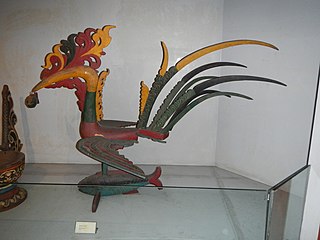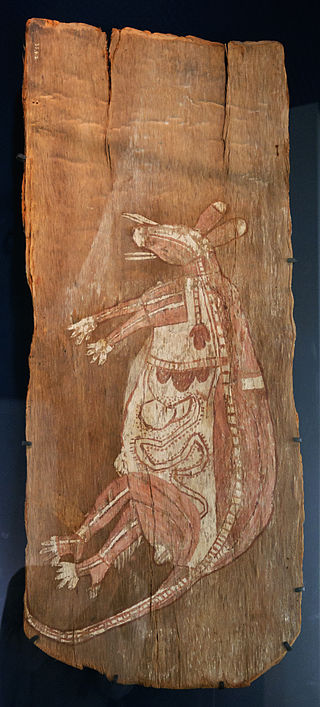
The chicken is a domesticated species that arose from the red junglefowl, originally from Southeast Asia. They have also partially hybridized with other wild species of junglefowl. Rooster and cock are terms for adult male birds, and a younger male may be called a cockerel. A male that has been castrated is a capon. An adult female bird is called a hen, and a sexually immature female is called a pullet. Humans keep chickens primarily as a source of food or as pets. Traditionally, they were also bred for cockfighting, which is still practiced in some places. Chickens domesticated for meat are broilers, and for eggs, they are layers.

Cockfighting is a blood sport involving roosters ("cocks"), held in a ring called a cockpit. The first documented use of the word gamecock, denoting use of the cock as to a "game", a sport, pastime or entertainment, was recorded in 1634, after the term "cock of the game" used by George Wilson, in the earliest known book on the sport of cockfighting in The Commendation of Cocks and Cock Fighting in 1607. But it was during Magellan's voyage of discovery of the Philippines in 1521 when modern cockfighting was first witnessed and documented for Westerners by the Italian Antonio Pigafetta, Magellan's chronicler, in the Kingdom of Taytay.

A capon is a male chicken that has been castrated or neutered, either physically or chemically, to improve the quality of its flesh for food, and, in some countries like Spain, fattened by forced feeding.
U.S. states, districts, and territories have representative symbols that are recognized by their state legislatures, territorial legislatures, or tradition. Some, such as flags, seals, and birds have been created or chosen by all U.S. polities, while others, such as state crustaceans, state mushrooms, and state toys have been chosen by only a few.

Alectryomancy is a form of divination in which the diviner observes a bird, several birds, or most preferably a white rooster or cockerel pecking at grain that the diviner has scattered on the ground. It was the responsibility of the pullularius to feed and keep the birds used. The observer may place grain in the shape of letters and thus discern a divinatory revelation by noting which letters the birds peck at, or the diviner may just interpret the pattern left by the birds' pecking in randomly scattered grain.

Cardinal is a vivid red, which may get its name from the cassocks worn by Catholic cardinals. The cardinal bird also takes its name from the cardinal bishops.
The Delaware Blue Hen or Blue Hen of Delaware is a blue strain of American gamecock. Under the name Blue Hen Chicken it is the official bird of the State of Delaware. It is the emblem or mascot of several institutions in the state, among them the sports teams of the University of Delaware.

The Sarimanok, also known as papanok in its feminine form, is a legendary bird of the Maranao people, who originate from Mindanao, an island in the Philippines, and part of Philippine mythology. It comes from the words sari and manok. Sari means "assorted" or "various", while manok originally meant "bird" as evidenced by early Spanish colonial sources, but came to mean only "chicken", which is how it is understood today.

Adidas Tricolore was the official match ball of 1998 FIFA World Cup in France. The Tricolore was officially unveiled in December 1997, being the first colorized ball used in a FIFA World Cup.

The Gallic rooster is a national symbol of France as a nation, as opposed to Marianne representing France as a state and its values: the Republic. The rooster is also the symbol of the Wallonia region and the French Community of Belgium.

The South Carolina Gamecocks represent the ( ) in the NCAA Division I.

The coat of arms of Kenya features two lions, a symbol of protection, holding spears and a traditional East African shield. The shield and spears symbolize unity and defence of freedom. The shield contains the national colours, representing:

Cocky is the costumed mascot of the University of South Carolina athletics teams. He represents a cartoon version of a gamecock.

Kangaroos, Wallabies and other Macropodidae have become emblems and symbols of Australia, as well as appearing in popular culture both internationally and within Australia itself.

The Providence Friars are the intercollegiate athletic teams that represent Providence College, located in Providence, Rhode Island. They compete in the Big East Conference for every sport except for ice hockey, where they compete in Hockey East. The Big East Conference was founded in 1979 by former athletic director and men's basketball coach Dave Gavitt. On December 15, 2012, Providence and the other seven Catholic, non-FBS schools announced that they were departing the Big East for a new conference; on March 7, 2013, it was officially confirmed that Providence's new conference would operate under the Big East name. The women's volleyball team, which had been an associate member of the America East Conference before the Big East split, remained in that conference for one more season before joining the Big East for the 2014 season.

The South Carolina Gamecocks football program represents the University of South Carolina. The Gamecocks compete in the Football Bowl Subdivision of the National Collegiate Athletic Association (NCAA) and the Eastern Division of the Southeastern Conference. The team's head coach is Shane Beamer. They play their home games at Williams–Brice Stadium.

Chantecler is a verse play in four acts written by Edmond Rostand. The play is notable in that all the characters are farmyard animals including the main protagonist, a chanticleer, or rooster. The play centers on the theme of idealism and spiritual sincerity, as contrasted with cynicism and artificiality. Much of the play satirizes modernist artistic doctrines from Rostand's romanticist perspective.

National symbols of France are emblems of the French Republic and French people, and they are the cornerstone of the nation's republican tradition.

Hahn/Cock is a sculpture of a giant blue cockerel by the German artist Katharina Fritsch. It was unveiled in London's Trafalgar Square on 25 July 2013 and was displayed on the vacant fourth plinth. The fibreglass work stood 4.72 metres (15.5 ft) high and was the sixth work to be displayed on the plinth, on which it stayed until 17 February 2015. It was subsequently acquired by Glenstone, a private museum, and exhibited at the National Gallery of Art in Washington, DC, following its 2016 reopening. In March 2021, Glenstone permanently donated the piece to the National Gallery.

There are numerous cultural references to chickens in myth, folklore, religion, language, and literature. Since antiquity, chickens have been a sacred animal in many cultures and are deeply embedded within belief systems and religious worship.

















